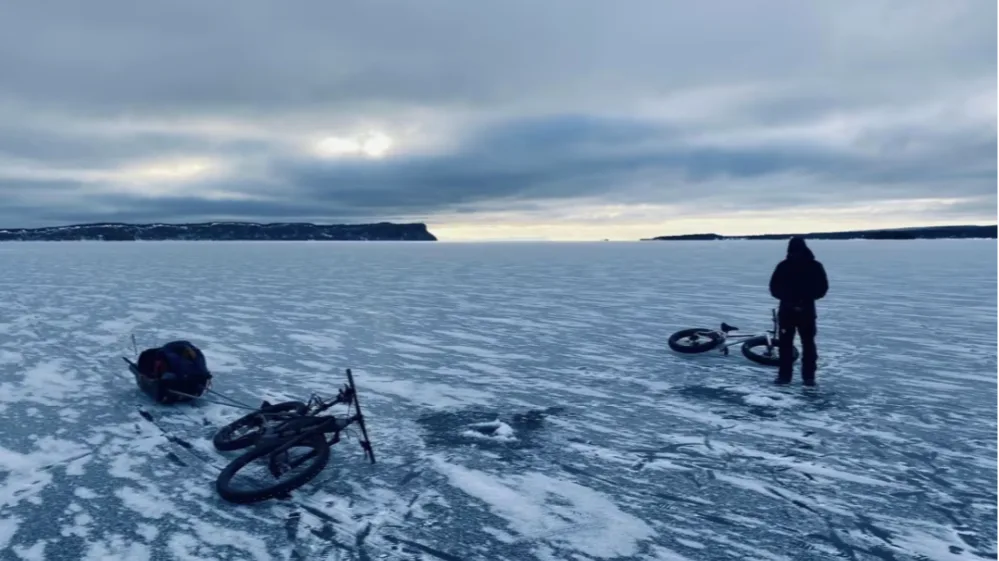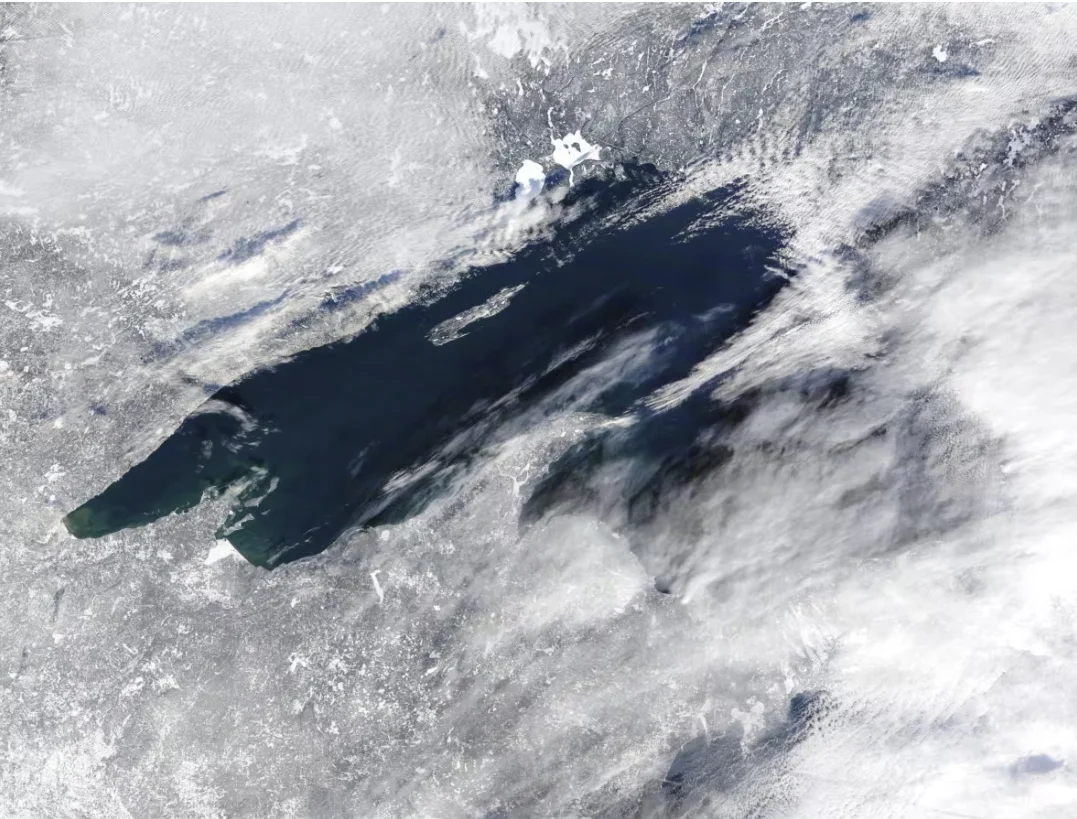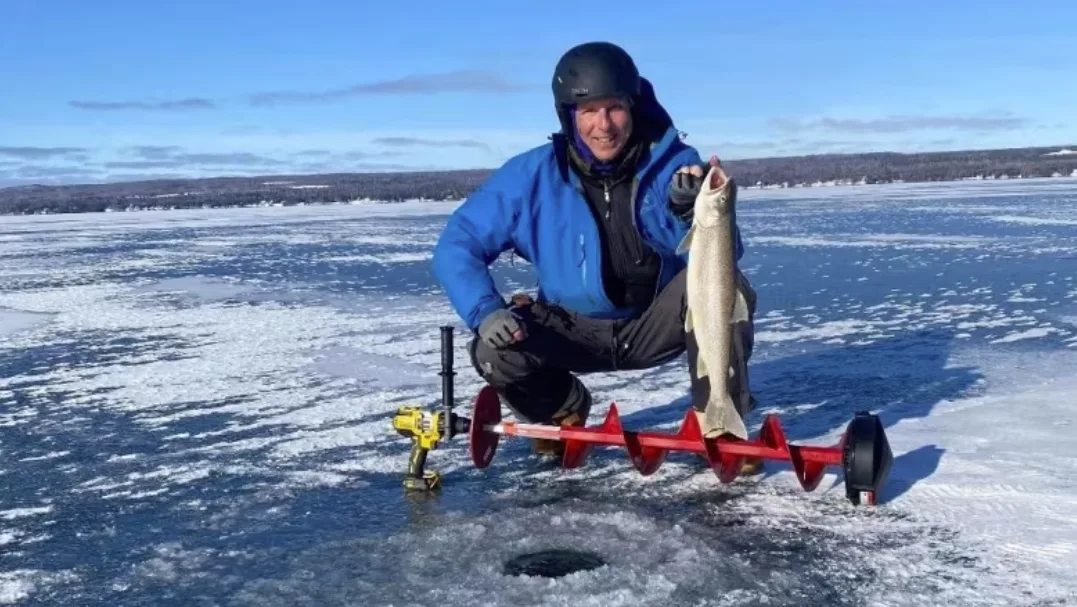
New normal? Ice cover on Lake Superior is less than 5% in the middle of January
Small groups of people have been taking to the new ice on Thunder Bay in recent days skating, biking ice boating and ice fishing. Yet this fun on the ice has been slow in coming this winter. And they are on thin ice.
The ice formation on Thunder Bay has been slow to form this winter, due to above average air temperatures through December and into January.
Mild temperatures this winter have impacted ice cover on all of the Great Lakes, including Lake Superior, whch has less than five per cent ice cover, which is not far off the normal for this time for year, explained Jason Ross,a forecaster with the Canadian Ice Service.
SEE ALSO: Want to build a backyard rink? Here's a look at the process
And it's not just the ice coverage that's low, the ice that is there isn't as thick as it usually is, especially on Thunder Bay itself. Ross said.
"In Black Bay we're looking at thick lake ice, which would be above 30 cm.," said Ross. "In Nipigon Bay, we have medium lake ice which is between 15 and 30 cm. and Thunder Bay has a bit thinner ice, so between 5 and 15 cm."
Ross noted that around the remaining Great Lakes, the air temperatures have been even warmer, and whatever ice formed at the end of December has melted. He said only small parts of Lake Michigan and Lake Erie have ice and Lake Ontario is largely ice free.
Ross said Lake Huron in particular has significantly less ice this winter.
"So in the North Channel and in Georgian Bay, normally for the past 10 years, at this time of the year, we'd have about 11 per cent coverage on Lake Huron, but we're currently at four per cent."

This screenshot from NOAA CoastWatch - Great Lakes Region, shows most of Lake Superior on January 8, 2023. Ice can be seen on both Nipigon Bay and Black Bay, on the lake's north shore. However, the vast majority of the lake remains ice free. (photo/coastwatch.glerl.noaa.gov)
The lack of ice on Lake Superior is not a surprise to Jay Austin. He has been studying Lake Superior at the University of Minnesota Duluth's Large Lakes Observatory.
He said there have been years within the past decade where Lake Superior has had lots of ice. He notes that in 2014, a Polar Vortex lead to most of the lake being frozen in February and March, which Austin said was "unheard of" in the modern record.
WATCH: Police warn Canadians of the dangers behind 'ice shelves'
However, Austin said recent history suggests low ice on Superior is increasingly the new normal.
"So if you look at ice coverage prior to 1998, most years we had moderate to heavy ice cover,"Austin said. "Then '98 itself was an El Niño year with very low ice coverage and we've had lots of those extremely low coverage years since then.
"It does really appear the atmosphere sort of shifted into a different mode in 1998 and we've never seemed to shift back," he said.
Part of Austin's research looks at seasonal connections to ice. For instance,what the implications to the environment and to fish might be in a high-ice year as compared to a low-ice year.

Julian Holenstein, of Thunder Bay, Ont., with a lake trout he caught Jan, 12,2023, on Lake Superior. (Supplied by Julian Holenstein)
"High ice years tend to be followed by relatively cold summers," said Austin. "And low ice years like we're having right now tend to be followed by relatively warm water in in the summer. And so one thing I'm working on right now is developing a better understanding of those sorts of connections."
Ross said the computer modelling done by the Canadian Ice Service suggests people should get used to seeing less ice on the Great Lakes in the years ahead.
He said the long term trend suggests a decline in ice cover of two or three per cent per decade.
"Those years where we have lakes filled up with ice are becoming less frequent and and the years where we have low amounts of lake ice are becoming more frequent," he said. "So we expect that trend to continue in the future."
Thumbnail from Julian Holenstein/Facebook via CBC.
This article, written by Gord Ellis, was originally published for CBC News.









